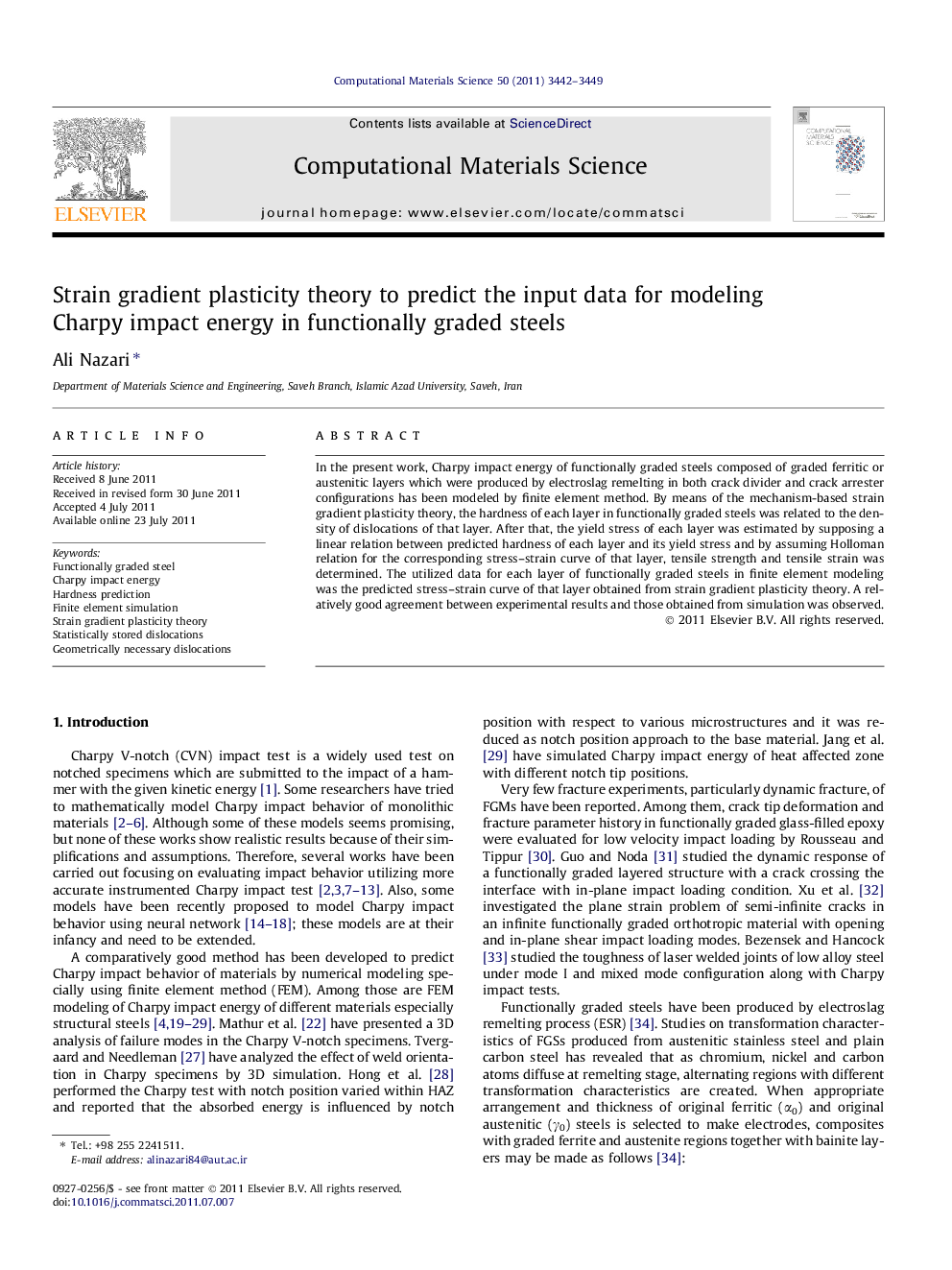| Article ID | Journal | Published Year | Pages | File Type |
|---|---|---|---|---|
| 1562033 | Computational Materials Science | 2011 | 8 Pages |
In the present work, Charpy impact energy of functionally graded steels composed of graded ferritic or austenitic layers which were produced by electroslag remelting in both crack divider and crack arrester configurations has been modeled by finite element method. By means of the mechanism-based strain gradient plasticity theory, the hardness of each layer in functionally graded steels was related to the density of dislocations of that layer. After that, the yield stress of each layer was estimated by supposing a linear relation between predicted hardness of each layer and its yield stress and by assuming Holloman relation for the corresponding stress–strain curve of that layer, tensile strength and tensile strain was determined. The utilized data for each layer of functionally graded steels in finite element modeling was the predicted stress–strain curve of that layer obtained from strain gradient plasticity theory. A relatively good agreement between experimental results and those obtained from simulation was observed.
► Functionally graded steels produced by electroslag remelting. ► Mechanism-based strain gradient plasticity theory. ► Charpy impact energy and its relation with the area under stress–strain curve. ► Finite element simulation of impact behavior.
